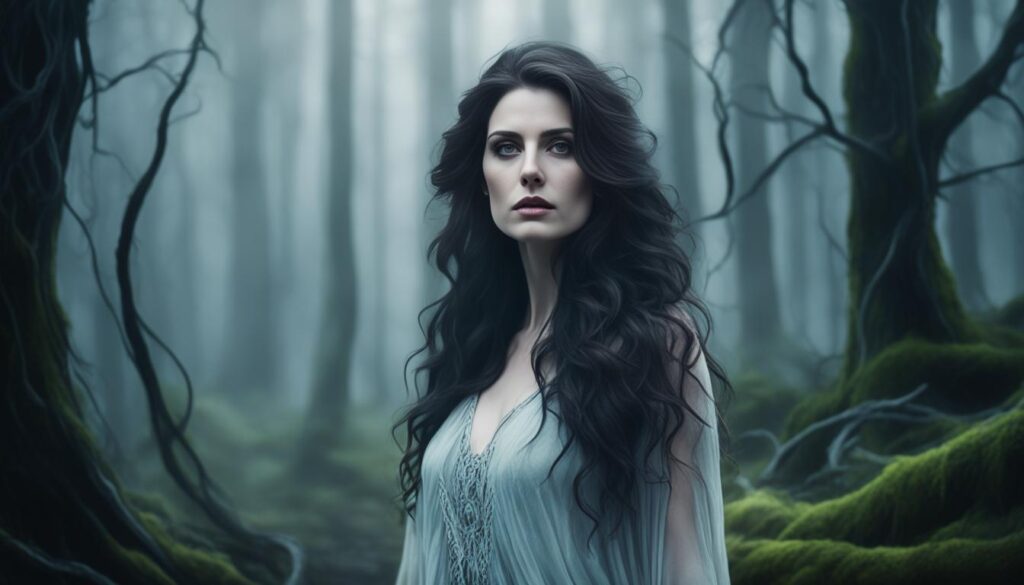Welcome to our detailed analysis of the surprising feats and stories that will make you say, “Victor, you actually did this.” In this article, written by Steve Rodgers, we will take a deep dive into various situations and accomplishments that inspire such a response. Brace yourself for an enlightening journey that will leave you amazed and inspired.
Whether it’s Victor’s remarkable speeches, his intellectual development, or his unique connection with nature, we will explore every aspect of his character and the profound impact it has on the story. Get ready to uncover hidden insights and gain a deeper understanding of Victor’s motives, his ambition, and the repercussions of his actions.
But don’t worry, this article is not just a dry analysis of Victor’s character. We’ll also discuss the misconceptions about content marketing tools and the portrayal of the female image in “Frankenstein.” So, whether you’re interested in SEO, website optimization, or simply love diving into the depths of classic literature, we’ve got you covered.
So, let’s embark on this journey together and explore the fascinating world of Victor, his accomplishments, and the themes presented in Mary Shelley’s iconic novel. Get ready to say, “Victor, you actually did this!”
The Speech Pattern of Victor Timely
In episode three, there has been discussion and criticism surrounding the speech pattern of Victor Timely, portrayed by Jonathon Major. Major depicted Timely with a speech impediment known as Blocks, which involves longer pauses than expected with normal speech. Some viewers initially thought this was overacting, but further research reveals that Blocks is a real speech impediment that Major accurately portrayed.
Understanding Blocks: A Legitimate Speech Impediment
Blocks, the speech impediment depicted by Jonathon Major in the character of Victor Timely, is a condition that affects many individuals in real life. It is characterized by temporary pauses or interruptions in speech flow, which can create difficulties in expressing oneself fluently.
People with Blocks may experience involuntary disruptions in their speech, resulting in longer pauses between words or syllables. These pauses can vary in duration and frequency, making it challenging for individuals to maintain a smooth and fluid speech pattern.
“The portrayal of Blocks by Jonathon Major in the character of Victor Timely brings much-needed visibility to individuals who struggle with speech impediments. It is commendable to see this specific condition represented accurately on screen.”
By accurately depicting the speech pattern associated with Blocks, Jonathon Major sheds light on the challenges faced by individuals with speech impediments, contributing to a broader understanding and acceptance of diverse communication styles.
An Artistic Representation That Sparks Conversation
Jonathon Major’s portrayal of Victor Timely’s speech pattern has sparked conversations and debates among viewers. Some initially mistook the depiction for overacting or a deliberate choice by the actor. However, further examination and research indicate that Major’s performance showcases the authentic characteristics of Blocks, allowing viewers to gain insight into the experiences of individuals with speech impediments.
Bringing visibility to speech impediments through various forms of media can help break down barriers and promote inclusivity. The accurate representation of Victor Timely’s speech pattern serves as a reminder that diversity encompasses more than just visible characteristics, extending to the diverse ways individuals communicate.
Breaking Stigma and Promoting Acceptance
Addressing speech impediments in mainstream media fosters understanding and acceptance, challenging the stigmas that surround these conditions. By showcasing the challenges faced by individuals with Blocks, the portrayal of Victor Timely encourages empathy and promotes a more inclusive society.
| Misconception | Reality |
|---|---|
| Blocks is a result of overacting | Blocks is a legitimate speech impediment |
| Victor Timely’s speech pattern is exaggerated | Victor Timely’s speech pattern accurately represents Blocks |
| Speech impediments should be hidden or ignored | Speech impediments should be acknowledged and understood |
The Misconception about Content Marketing Tools
Many content marketers mistakenly believe that success in content marketing can be achieved solely through the use of specific tools and software. However, the truth is that content marketing is an art that requires a combination of business insight, storytelling, journalism, and a pinch of content marketing. Simply relying on tools and software will not guarantee better results overnight.
While content marketing tools and analytics software can provide valuable data and insights, they are only a part of the equation. It is important to remember that content marketing is ultimately about connecting with your audience and providing them with valuable, engaging content.
Developing a successful content marketing strategy requires a deep understanding of your target audience, their needs, and their preferences. This level of insight cannot be obtained solely through the use of tools and software. It requires human intuition and the ability to analyze and interpret data in the context of your brand and industry.
As Steve Jobs once said, “Technology is nothing. What’s important is that you have faith in people, that they’re basically good and smart, and if you give them tools, they’ll do wonderful things.”
Content marketing is a multi-faceted discipline that requires a diverse skill set. While tools and software can automate certain processes and provide helpful data, they cannot replace the creativity and expertise of a skilled content marketer.
By combining business insight, storytelling, journalism, and content marketing strategies, you can create compelling content that resonates with your audience and drives meaningful engagement.
So, the next time you hear about a new content marketing tool or analytics software, remember to approach it with a critical eye. Evaluate how it can complement your existing strategies and enhance your content creation process, but don’t rely on it as a magic solution.
Content marketing is about understanding your audience, crafting relevant and valuable content, and delivering it through the right channels. Tools and software are just a means to an end, not the entire solution.
Key Takeaways:
- Content marketing success relies on a combination of business insight, storytelling, journalism, and content marketing strategies.
- Tools and analytics software can provide helpful data and insights, but they are not a substitute for human intuition and interpretation.
- Approach content marketing tools with a critical eye and evaluate how they can complement your existing strategies.
- Focus on understanding your audience and crafting valuable content that resonates with them, using tools as a means to enhance your process, not as a magic solution.
Victor Frankenstein’s Selfishness and Ambition
In the gothic novel “Frankenstein” by Mary Shelley, we are introduced to the complex character of Victor Frankenstein. Throughout the story, Frankenstein’s selfishness and ambition drive his actions and shape the course of the narrative.
Victor’s selfish desires for scientific achievement and fame are evident from the very beginning. He becomes consumed by his ambition to create life and seeks to elevate himself to god-like status. This obsession takes precedence over his own well-being and the welfare of those around him.
“Learn from me…how dangerous is the acquirement of knowledge and how much happier that man is who believes his native town to be the world.” – Victor Frankenstein
Instead of considering the consequences of his actions, Victor neglects his health and relationships, sacrificing everything for his ambitions. He becomes isolated and detached from the world, losing touch with his own humanity in the process.
Victor’s selfishness is most prominently displayed in his treatment of his creation, often referred to as the monster. Despite being the one who brought it to life, Victor immediately abandons the creature out of fear and disgust. This act of rejection sets off a chain of events that leads to the monster’s vengeance and Victor’s downfall.
Throughout the novel, Victor’s irresponsibility and obsession with personal success overshadow any consideration for the well-being of others. He is willing to sacrifice the lives of those closest to him in his pursuit of scientific achievement, illustrating the extent of his selfishness.
The consequences of Victor’s selfishness and ambition are far-reaching. His creation, the monster, seeks revenge due to the abandonment and mistreatment it has endured. This serves as a warning against the dangers of unchecked ambition and the potential consequences of selfish actions.
The Monstrous Consequences
The selfishness and ambition of Victor Frankenstein ultimately lead to the creation of a monster that haunts him throughout the novel. The creation is a physical embodiment of Victor’s relentless pursuit of power and his unwillingness to accept the responsibility that comes with it. It is through the monster’s existence that Shelley challenges the notion of playing God and highlights the destructive nature of unchecked ambition.
| Victor Frankenstein’s Selfishness and Ambition | Monstrous Consequences |
|---|---|
| Driven by selfish desires for scientific achievement and fame | Creation of a monster who seeks revenge |
| Obsession with creating life leads to neglect of health and relationships | Isolation and detachment from the world |
| Abandons the monster out of fear and disgust | Chain of events that leads to the monster’s vengeance and Victor’s downfall |
| Willing to sacrifice lives for personal success | Loss of those closest to him |
Victor Frankenstein’s selfishness and ambition serve as cautionary reminders of the dark side of human nature. Mary Shelley’s portrayal of Victor’s character raises questions about the ethics of scientific advancement and the consequences of unchecked ambition.

Victor Frankenstein’s Intellectual Development
In “Frankenstein,” Victor Frankenstein’s intellectual development plays a crucial role in driving the narrative forward. From a young age, Victor is driven by a relentless thirst for knowledge and a desire to understand the secrets of the world. This ambition leads him to excel academically, as he immerses himself in the study of natural philosophy and chemistry.
Victor’s intellectual pursuits are not simply driven by academic achievement, but by a deep curiosity and a belief that he can surpass the limits of human knowledge. He is fascinated by the mysteries of creation and seeks to unlock the secrets of life itself.
“I had worked hard for nearly two years, for the sole purpose of infusing life into an inanimate body. For this I deprived myself of rest and health.” – Mary Shelley, Frankenstein
This quote exemplifies Victor’s unwavering dedication to his intellectual endeavors. He is willing to sacrifice his own well-being and personal relationships in pursuit of his ambitious goals.
Victor’s intellectual development reaches its zenith when he successfully brings the monster to life. However, his grand achievement soon becomes his greatest regret, as the consequences of his creation haunt him throughout the novel.
Through Victor Frankenstein’s intellectual development, Mary Shelley explores the moral and ethical implications of unchecked ambition and the dangers of playing God. His insatiable thirst for knowledge becomes his downfall, as he pushes the boundaries of scientific discovery without considering the moral implications of his actions.
The Acquisition of Knowledge
Victor’s intellectual development is driven by his insatiable curiosity and his desire to acquire knowledge. This drive is evident in his studies at Ingolstadt, where he becomes consumed by his experiments and neglects his own well-being.
Victor’s pursuit of knowledge also reflects the Romantic era’s fascination with science and discovery. The scientific advancements of the time fostered a belief that humanity could transcend its limitations and achieve great feats through intellectual endeavors.
The acquisition of knowledge comes with a price, however, as Victor becomes isolated from society and loses touch with his own humanity. His relentless pursuit of knowledge blinds him to the consequences of his actions and casts a shadow over his moral judgment.
The Pursuit of Ambition
Victor’s intellectual development is closely linked to his ambition. His burning desire to achieve greatness pushes him to experiment with life and death, defying the boundaries set by society and nature.
This ambition drives him to accomplish what no one else has dared to attempt. However, as Victor soon discovers, unchecked ambition can lead to devastating consequences. His creation, the monster, embodies the darker side of his ambition and serves as a reminder of the dangers of unrestrained pursuit of power.
Victor Frankenstein’s intellectual development is a cautionary tale of the perils of unbridled ambition and the consequences of unchecked curiosity. His journey from a young, ambitious scholar to a tormented creator underscores the moral implications of scientific advancement and the ethical considerations that should accompany intellectual pursuits.
Victor Frankenstein’s Attraction to Nature
Nature plays a significant role in Victor Frankenstein’s life. He finds solace and perspective in the awe-inspiring beauty of natural landscapes, particularly in his encounters with glaciers. These experiences of solitude in nature bring him both emotional and religious enlightenment, reminding him of his own insignificance in the face of greater forces.
Victor’s attraction to nature is evident in his descriptive and poetic language when describing the glaciers:
“Their icy and glittering peaks shone in the sunlight over the clouds. They seemed to beckon us to ascend to the realms of peace and purity.”
These encounters with glaciers give Victor a sense of solitude, a chance to reflect on the power and majesty of the natural world. In these moments, he escapes from his scientific pursuits and is reminded of the larger forces at play.

A Contrast to Scientific Pursuits
Victor’s attraction to nature serves as a contrast to his scientific pursuits. While his experiments and creations are driven by a desire to conquer and control nature, his experiences in nature remind him of his own smallness and insignificance.
Through his interactions with the natural world, Victor gains a newfound perspective on his ambitions and the consequences of his actions. Nature forces him to confront the limits of his knowledge and power, highlighting the delicate balance between creation and destruction.
A Source of Inspiration
Furthermore, nature serves as a source of inspiration for Victor. The beauty and intricacy of the natural world ignite his curiosity and fuel his desire for knowledge and exploration. It is within nature’s grandeur that he seeks answers to his existential questions and finds solace in its timeless beauty.
Victor Frankenstein’s attraction to nature is a recurring theme throughout the novel. It not only provides him with moments of emotional and religious enlightenment, but also offers a contrast to his scientific pursuits and serves as a wellspring of inspiration.
The Theme of Friendship in “Frankenstein”
Friendship is a recurring theme in “Frankenstein.” Victor Frankenstein’s pursuit of creating life is driven by his desire for a life partner and companion. However, his rejection of the monster he creates leads to a sense of isolation and loneliness for both characters.
Victor Frankenstein, consumed by his ambition to play God, rejects the monster with disdain and horror. The monster, yearning for connection and understanding, is rejected not only by his creator but also by society. This rejection sets the stage for the exploration of the consequences of isolation and the seeking of revenge.
The theme of friendship in “Frankenstein” highlights the devastating impact of rejection and the absence of sympathy. Both Victor and the monster experience the pain of loss and the yearning for companionship, emphasizing the importance of genuine human connection and empathy.
Victor’s Rejection
Victor’s rejection of the monster stems from his fear and disgust. He is unable to see beyond the creature’s physical appearance, failing to recognize the potential for emotional connection and understanding. This rejection isolates Victor from his creation and perpetuates the cycle of loneliness and despair.
The Monster’s Perspective
From the monster’s perspective, rejection becomes a defining experience. The monster, despite his initial desire for friendship and acceptance, is met with fear, hostility, and violence. He learns the harsh reality of society’s prejudice and the consequences of being an outsider.
The theme of friendship in “Frankenstein” serves as a warning against the dangers of isolation and the power of empathy. It raises questions about the responsibility of creators and the role of society in nurturing relationships and promoting understanding.
By exploring the consequences of rejection and the longing for sympathy, “Frankenstein” reminds us of the profound impact that friendship and compassion can have on our lives. It serves as a cautionary tale against the dangers of unchecked ambition and the importance of valuing human connections.

The Portrayal of the Female Image in “Frankenstein”
In “Frankenstein,” Mary Shelley skillfully portrays the female image through characters like Elizabeth. The depiction of the idealized female image in the novel is associated with traits such as purity, tenderness, and devotion to family.
Shelley’s portrayal of the female characters reflects the societal expectations of women during the Romantic era. Women were often seen as domestic angels, fulfilling traditional gender roles and maintaining purity in their actions and demeanor.
Elizabeth, Victor Frankenstein’s adopted sister and love interest, exemplifies this portrayal of the female image. She is depicted as virtuous, gentle, and devoted, embodying the qualities of a domestic angel.
“Elizabeth…was docile and good-tempered, yet gay and playful as a summer insect…she was so good herself, so entirely devoted to those around her, that I could almost fancy it was an angel rather than a human being who smoked so sweetly.”
The emphasis on Elizabeth’s purity and devotion to her loved ones serves to reinforce the traditional gender roles and societal expectations of women during that time period.
Through the portrayal of the female image in “Frankenstein,” Shelley invites readers to reflect on the limitations imposed on women and the societal pressures surrounding notions of purity and domesticity.

Conclusion
In conclusion, our analysis of various surprising feats and stories has provided valuable insights into the complex character of Victor in “Frankenstein.” Through our exploration of different aspects such as speech patterns, selfishness, intellectual development, nature, friendship, and the portrayal of the female image, we have gained a deeper understanding of Victor’s journey.
We have uncovered the truth behind Victor Timely’s speech impediment, highlighting the accuracy of Jonathon Major’s portrayal. By delving into Victor Frankenstein’s selfishness and ambition, we have witnessed the destructive consequences of his relentless pursuit of scientific achievement.
Furthermore, our examination of Victor’s intellectual development and his attraction to nature has shed light on the internal conflicts he faces, as well as the power and beauty of the natural world. The theme of friendship has revealed the consequences of rejection and the impact it has on both Victor and the monster he creates.
Moreover, our analysis of the portrayal of the female image in “Frankenstein” has uncovered the societal expectations of women during the Romantic era, emphasizing traditional gender roles and the idealization of purity and domesticity.
Overall, our journey through the surprising feats and stories of Victor has provided valuable insights into the themes and complexities of “Frankenstein.” It is through these analyses that we gain a deeper appreciation for Mary Shelley’s timeless masterpiece.